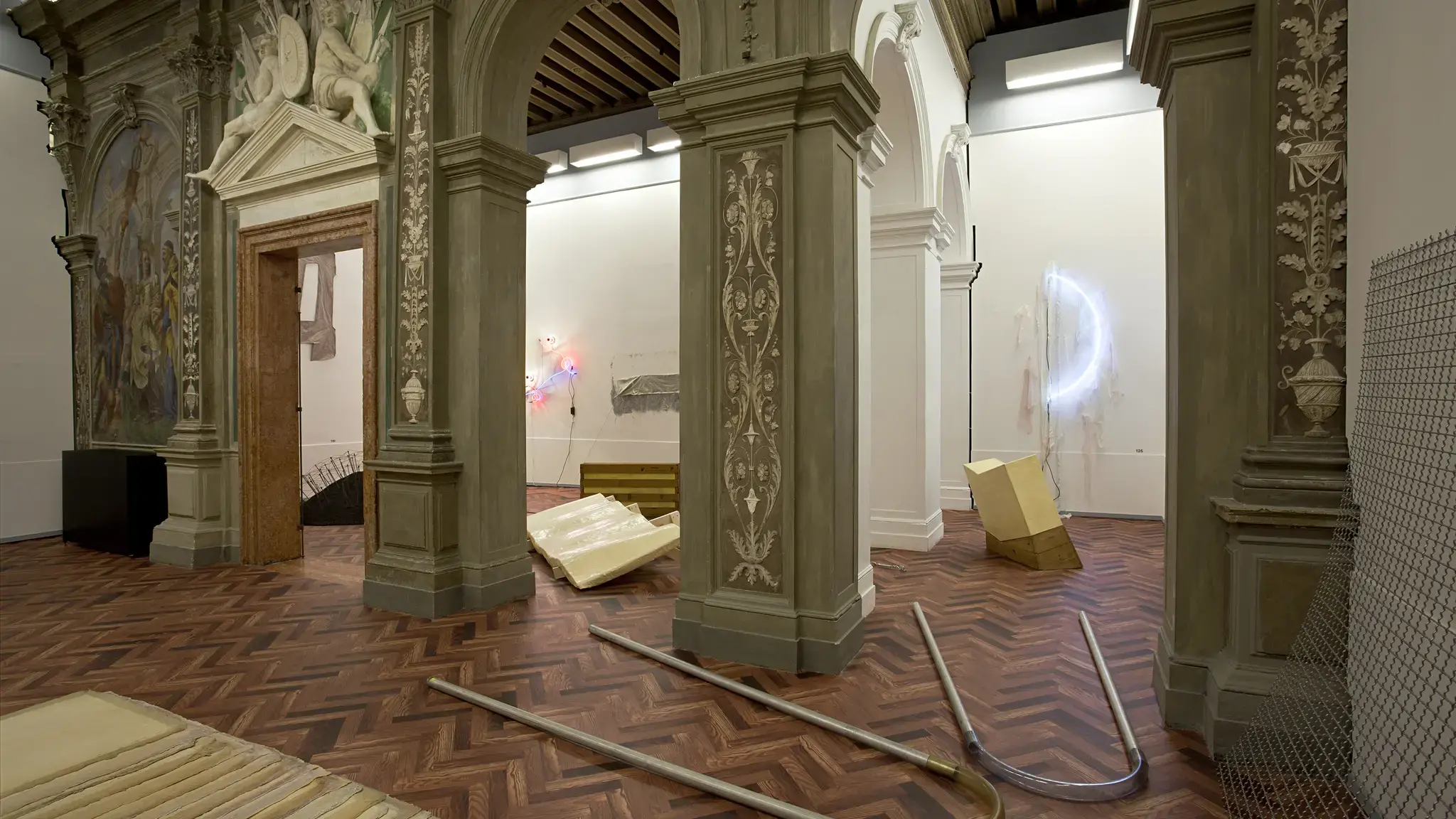The Center's new publication, Site Read: Seven Curators on Their Landmark Exhibitions, published by Mousse Publishing, is an anthology of essays from exhibition makers who illuminate the site-based innovations in now-iconic exhibitions they organized.
Below is an excerpt from the book's introduction by Bruce Altshuler, director of New York University’s program in museum studies. Altshuler is the author of several books, including The Avant-Garde in Exhibition: New Art in the 20th Century, and an essay contributor to numerous catalogues for exhibitions organized by the Whitney Museum of American Art, the Carnegie Museum of Art, and New York's Japan Society, among others.
Order the book from Barnes and Noble or Mousse.
Excerpt: “Innovating Sites”
by Bruce Altshuler
The notion of a conceptual site reminds us that while the spatial location of physically realized artworks is the most natural way to understand the notion of exhibition site, it is not the only one. The catalogue for dealer and conceptual art impresario Seth Siegelaub’s exhibition July, August, September 1969 suggests that it is a multisite group show consisting of one work each by eleven artists, every piece available for viewing or contemplation somewhere in the world during the three months named in the show’s title. We might view the show’s catalogue as its site, for this was the only place where all the works were united. (A similar situation obtains with March 1–31, 1969, in which thirty-one artists were asked to create a work on a specific day of that month; the publication in this case was a page-a-day calendar documenting their responses and text-based works.) Indeed, Siegelaub had already developed the notion of a publication as the site of an exhibition with January 5–31, 1969, whose spatial realization was in a vacant office at 44 East Fifty-Second Street in New York. Here were installed two works each by four artists (Robert Barry, Douglas Huebler, Joseph Kosuth, Lawrence Weiner). However, the catalogue listed eight works each; in fact the show consisted of thirty-two pieces that were brought together only in that publication. This was possible, and intelligible, because all the works were primarily conceptual in nature, presentable equally in physical form and through words or documentation.
Seth Siegelaub’s exhibitions-as-catalogues were part of a range of presentations of art that took the form of publications and other published formats: exhibitions sited in publications. Siegelaub himself produced three additional models: the single-artist publications Douglas Huebler: November 1968 and Lawrence Weiner’s Statements (1968); what is now known as the Xerox Book, published in December 1968, in which seven artists were each given twenty-five pages for a work planned for production by photocopier; and the July–August 1970 issue of Studio International, a magazine exhibition for which Siegelaub asked six critics to each curate eight pages. Publications such as Avalanche, put out by Willoughby Sharp and Liza Béar in 1970–76, and the Art & Project Bulletin, published by the Amsterdam gallery Art & Project in 156 issues between 1968 and 1989, functioned as low-cost and easily distributed vehicles of display. Going more three-dimensional was Aspen 5+6, curated by Brian O’Doherty, which appeared in 1967 and contained printed matter, films, and vinyl records by artists and writers including John Cage, Robert Morris, Sol LeWitt, Alain Robbe-Grillet, and Susan Sontag. This “magazine in a box” recalled George Maciunas’s Fluxkits and Fluxboxes of the early and mid-1960s, evoking Marcel Duchamp’s Boîte-en-valise. They all can be viewed as exhibitions in a box.
As the classic Surrealist exhibitions derived their forms from the imagery and atmosphere of the works they contained, Siegelaub’s development of the catalogue as exhibition site stemmed from the nature of the art being presented.









